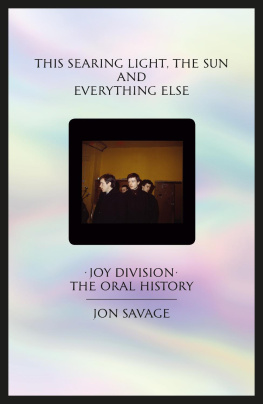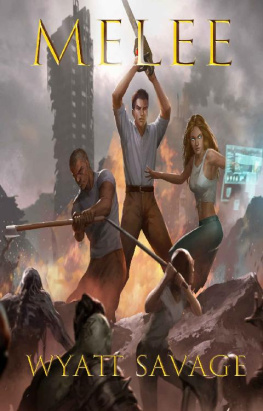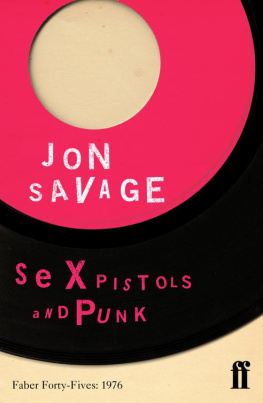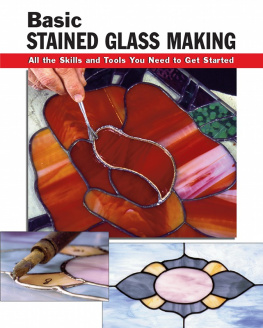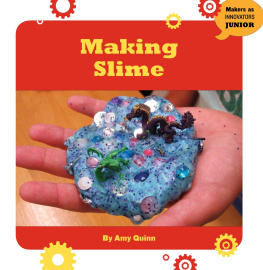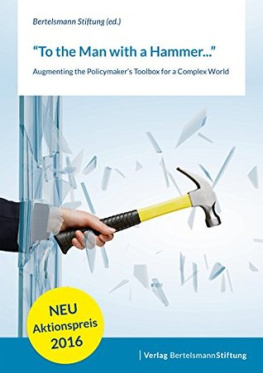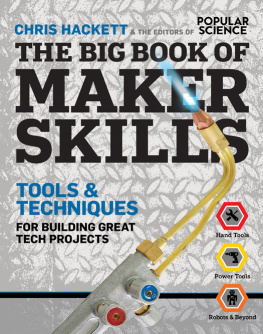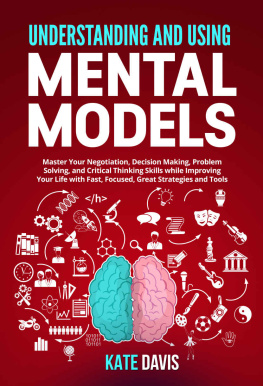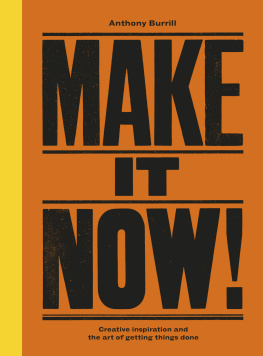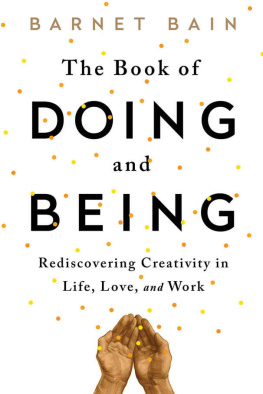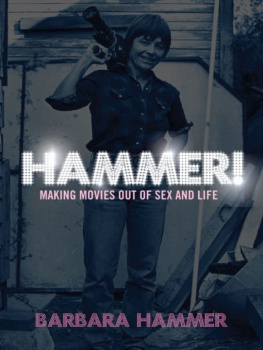Thank you for downloading this Simon & Schuster ebook.
Get a FREE ebook when you join our mailing list. Plus, get updates on new releases, deals, recommended reads, and more from Simon & Schuster. Click below to sign up and see terms and conditions.
CLICK HERE TO SIGN UP
Already a subscriber? Provide your email again so we can register this ebook and send you more of what you like to read. You will continue to receive exclusive offers in your inbox.
We hope you enjoyed reading this Simon & Schuster ebook.
Get a FREE ebook when you join our mailing list. Plus, get updates on new releases, deals, recommended reads, and more from Simon & Schuster. Click below to sign up and see terms and conditions.
CLICK HERE TO SIGN UP
Already a subscriber? Provide your email again so we can register this ebook and send you more of what you like to read. You will continue to receive exclusive offers in your inbox.
For my family, and all the other makers of the world
INTRODUCTION
M aking is more than the physical act of building. Its dancing, its sewing. Its cooking. Its writing songs. Its silk-screening. Its breaking new trails both literally and figuratively. Making, as my friend Andrew Coy, the former White House Senior Advisor for Making under President Obama, says, is simply a new name for one of the oldest human endeavors: creation.
Making things has driven me ever since I can remember. Its also been my employment forever, or nearly so. First, as a jack of all trades in the theater scene in New York and San Francisco in the mid-1980s and early 1990s; then as a model maker for commercials and movies; and finally for a solid fourteen-year stretch as a producer, science communicator, and serial blower-upper of things on MythBusters .
When people whove achieved some public success write about their lives, often their experiences get charted like a purposeful, linear climb up a mountain toward a summit of achievement. There is often the perception that all of that persons life was driven toward some goal either by fate or personal ambition. Whether its winning an Olympic medal or founding a Fortune 500 company or going to the moon, the story always seems to arc the same way. Life stories always look like straight lines from the vantage point of looking back, but precious few really are. My story certainly isnt.
My story is more of a path with many forks. There was a general direction I wanted to head, and a vague sense where I wanted to end upLEGO designer! Star Wars special effects guy!but at each of those forks, when I actually reached them, the decisions I made in the moment were based mostly on circumstances and opportunities that were directly in front of me. Some turns were wrong, some turns were right, some turns were just weird but then became right with time, like with MythBusters .
The fandom that Jamie Hyneman and I encountered from MythBusters was by no means broad-based, but as narrow as it was, it was twice as deep, because at that time there just wasnt a robust making community for young creatives to tap into. This is not to say that I was some kind of trailblazer. In fact, quite the opposite. I was following well-trod paths carved by generations of makers who came before me. But I think one of the reasons the show became so popular is that what we were doing was kind of an anomaly. Even though we could tell from the fans that there was still a love of making out there in the ether, it seemed that fewer people were taking up hammers to do the kinds of things that I was interested in. There was a lack of young people who were getting any practice working with their hands and their hearts to make things that were important to them. To create.
There are probably a million factors that contributed to why this was happeningthe rampant elimination of high school and early-grade shop classes through the 1980s and 1990s, an over-fixation on graduate degrees, a focus on technology and/or finance as primary modes for upward mobility, too many screens. Im not a sociologist or an anthropologist, so I dont have a full explanation for what I was seeing, just that I was finding it more and more difficult to find meaningful populations of good young makers to share ideas with.
Sometime in the mid-2000s that began to change, thanks in part to advances in rapid-prototyping technologies like 3-D printers, open-source software, and the spread of broadband internet. This DIY maker movement that emerged empowered young people, underprivileged communities, and the simply curious to learn, and teach, and share how to make things again. I also deeply credit Dale Dougherty, who founded Make: magazine in 2005 and offered a vision of an updated Popular Mechanics that felt like it was pulled directly from my wildest dreams. It was the perfect flagship for making, celebrating a broad constellation of creativity defined by tackleable projects and learnable practices.
Maker Faire was founded soon after in San Mateo, California, and a community was born. Im proud to say Ive been a part of the faire from the very beginning and Ive given a talk almost every year since its inception. Over time its come to be known as my annual Sunday sermon (a name I was unaware of for the first several years). Every year my subject is different, but inevitably I conclude with some kind of exhortation to keep making stuff, to keep creating, and to keep pushing past self-perceived limits. Because more than anything else, what I continue to fight against is all the ways in which the tools of creation are kept out of the hands of our most dynamic, creative minds. Whether it is because of apathy, lack of access, bureaucratic inertia, community indifference, or educational redlining, I dont care. The world needs more makers.
After the talk, I take a couple hours to meet fellow makers. Its always my favorite meet and greet of the year. We share stories and take pictures and I ask people what theyre making, because even if theyre nervous, their enthusiasm for what theyre currently building always wins out. Give a maker the chance to tell you about the thing theyre putting their time into, and good luck getting them to stop!
In one of the first years of the Maker Faire, a young man came up and said kind of sadly, I dont make, I code. Ive heard this sentiment a lot. I dont make, I __________ . Fill in the blank. Code, cook, craft (not sure why all my examples start with C), the list of exceptions people invent to place themselves on the outside of the club of makers is long and, to me, totally infuriating. Because the people who do that to themselvesor more likely, the people who TELL them thatare flat wrong.
CODING IS MAKING! I said enthusiastically to that young man. Whenever were driven to reach out and create something from nothing, whether its something physical like a chair, or more temporal and ethereal, like a poem, were contributing something of ourselves to the world. Were taking our experience and filtering it through our words or our hands, or our voices or our bodies, and were putting something in the culture that didnt exist before. In fact, were not putting what we make into the culture, what we make IS the culture. Putting something in the world that didnt exist before is the broadest definition of making, which means all of us can be makers. Creators.
Everyone has something valuable to contribute. It is that simple. It is not, however, that easy. For, as the things we make give us power and insight, at the same time they also render us vulnerable. Our obsessions can teach us about who we are, and who we want to be, but they can also expose us. They can expose our weirdness and our insecurities, our ignorances and our deficiencies. Even now, at fifty-one years old as I write this, I am enduring a frightening vulnerability with this book.


